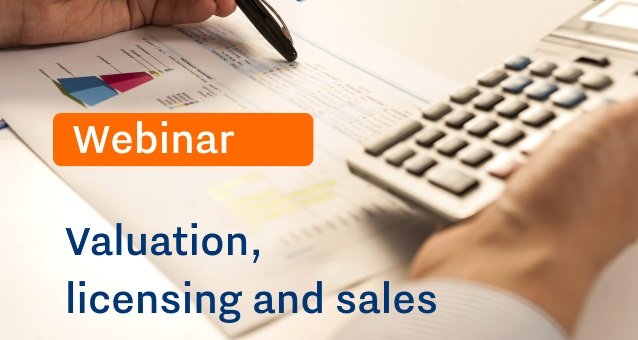Service
V.O. model quickly estimates patent value
How do you estimate the economic value of a patent? V.O. has developed a model that arrives at an estimation based on various factors. This allows companies to have a better understanding of how much their patent can deliver for them. The model offers an alternative to the more extensive investigations that are often used to determine a patent’s value: “We are faster and we arrive at an estimation at a lower cost.”
Four years ago, patent attorneys Martin Klok and Frits Michiels of V.O. and corporate finance adviser Matthias Havenaar, now employed by accounting and consultancy firm Baker Tilly, put their heads together. They had met each other when Matthias was bringing scientific innovations to market for Leiden University, a client of V.O. From this contact the question arose of whether it was possible to develop their own model that they could use to estimate the value of a patent quickly and easily. After several years of development and fine-tuning, this module is now being applied by V.O. in collaboration with Baker Tilly.
Why estimate the value of a patent?
Companies can find the value of a patent interesting for a variety of reasons, Matthias says. “Perhaps you want to sell an invention and, for that, you need to have an idea of its value. Others wonder whether they want to go through with applying for a patent at all. Maybe they must invest another €100,000 to successfully develop it and they first want to know what it can deliver. For properly substantiated portfolio management, insight into the value of the patents can therefore be very useful. An enterprise may also go bankrupt, after which a curator wants to know the value of a patent.”
The model has been successfully tested and is now available.
Quick and cost-efficient
The value of a patent is determined by many factors. Think of operational factors, such as the cost structure required to market the patent and the profit to be made, but also legal risk factors — the risk that the patent will be declared invalid or will not be granted. There are also other key aspects, such as the scope of protection, for example: To what extent does the patent actually prevent your competitors from performing activities that you also perform? These factors, and many more, collectively determine the value of a patent. Quantification of each of these factors is required to arrive at a well-founded estimate of the value.
Financial consultancy firms, including Baker Tilly, were already active in the value determination of patents. As Matthias explains, “In classic models, the emphasis is strongly on the prediction of the cash flows and the risk profile of the entire enterprise. The existing models are therefore mainly suitable for patents that have already been granted and are already producing cash flows. Only limited attention is given in the classic models to the legal aspects of the patent.”
Also watch our webinar ‘Valuation, Licensing and Sales’.

In their collaboration with Matthias, Martin and Frits have developed a model where the client is asked, by means of a questionnaire, about the factors that affect the patent’s value. Martin says, “Where necessary, we naturally help the client but, in general, the client is the one who is most familiar with their own plans and business operations. In addition, our model strongly emphasizes less tangible legal aspects, including the risk factors that are associated with the above-mentioned validity or invalidity and scope of protection.
Because the model poses the right questions to the client using a questionnaire, we in our collaboration with Baker Tilly can provide a value estimation — one that also considers legal risk factors — more quickly and at limited cost.”
Patent scores collectively determine its value
The questionnaire consists of two parts. First are the legal questions. These are about what the patent anticipates protecting and possible disputes with others who want to have their name on the innovation. Second, a financial questionnaire makes it clear how much money a patent can produce (cash flows).
For example, questions are asked about how difficult it is to locate products that infringe upon your right of ownership. If they are difficult to detect, you will then receive a lower score; but you will be given a higher score if you can easily find those types of products. After all, the easier it is to deter infringing products, the more the patent is worth.
The factors that contribute to the patent’s value are therefore provided with a score through focused questions of the client. These scores are then merged into one model by Baker Tilly and V.O. Not all topics are weighted equally in the final calculation, Martin explains: “Once you start, you collect all types of factors that you want to include in the estimation. You balance these as well as possible until the model makes sense. Sometimes we found factor B more important than factor C, for example.” All the scores for all underlying factors eventually lead to a general estimate of the patent’s value.
Wide application
You can look at entire patent families simultaneously or at individual patents. It also works for patents that have not yet been granted, so those that are still in the application phase. By means of consultation among the client, V.O. and Baker Tilly, a determination is made of the most useful approach for each matter. In the event of greater complexity, a bit of custom work is sometimes involved.
After the model has been successfully tested, it then becomes available to interested parties. Would you like to know more about this topic? Would you like to have the value of your patent or patent portfolio be determined? Please contact your patent attorney or directly contact Martin Klok.
Share